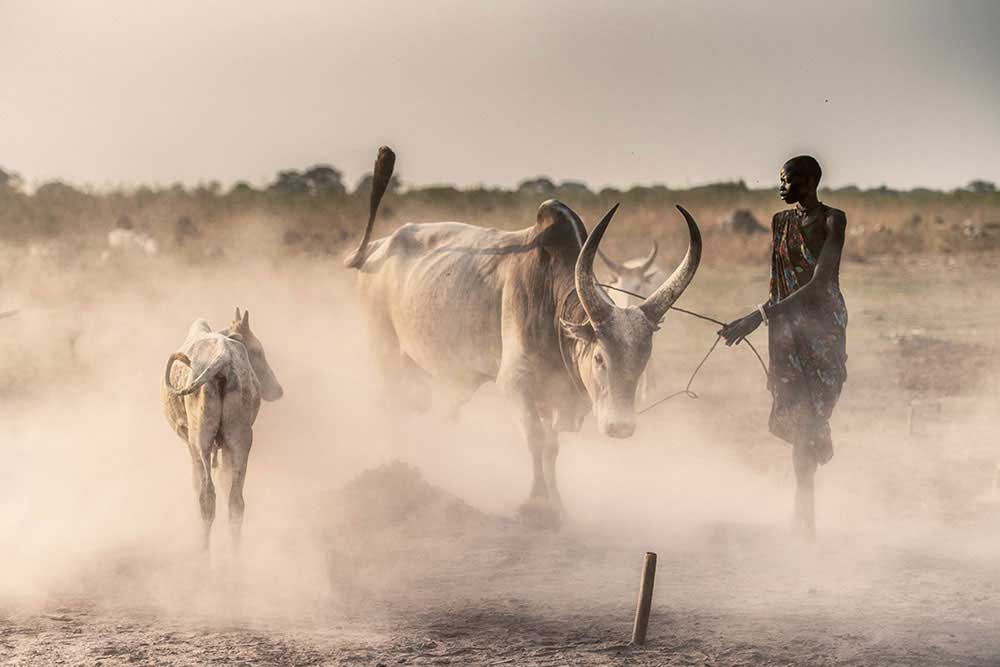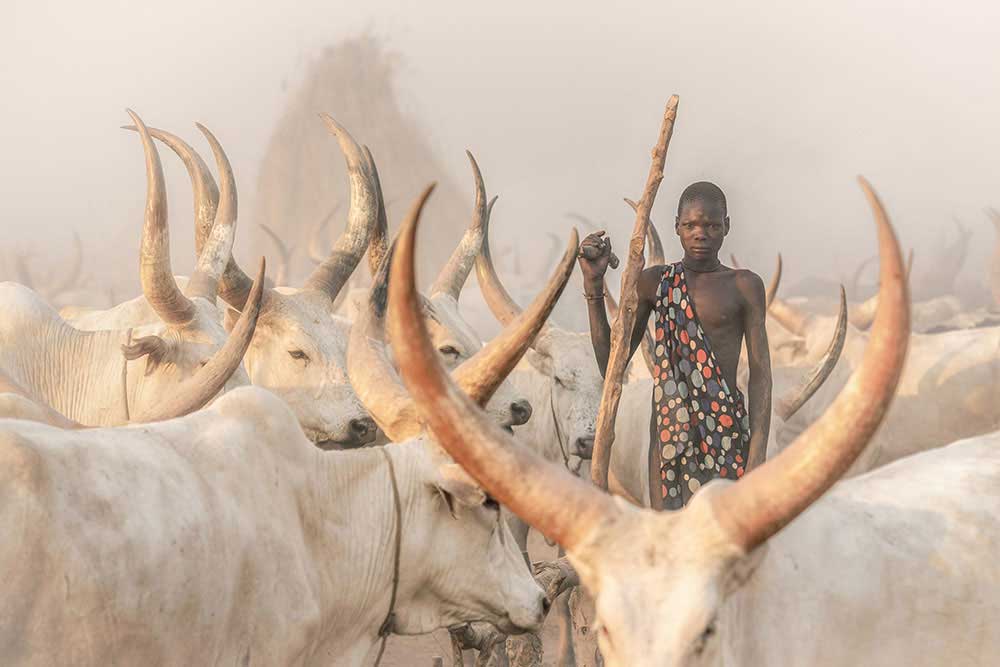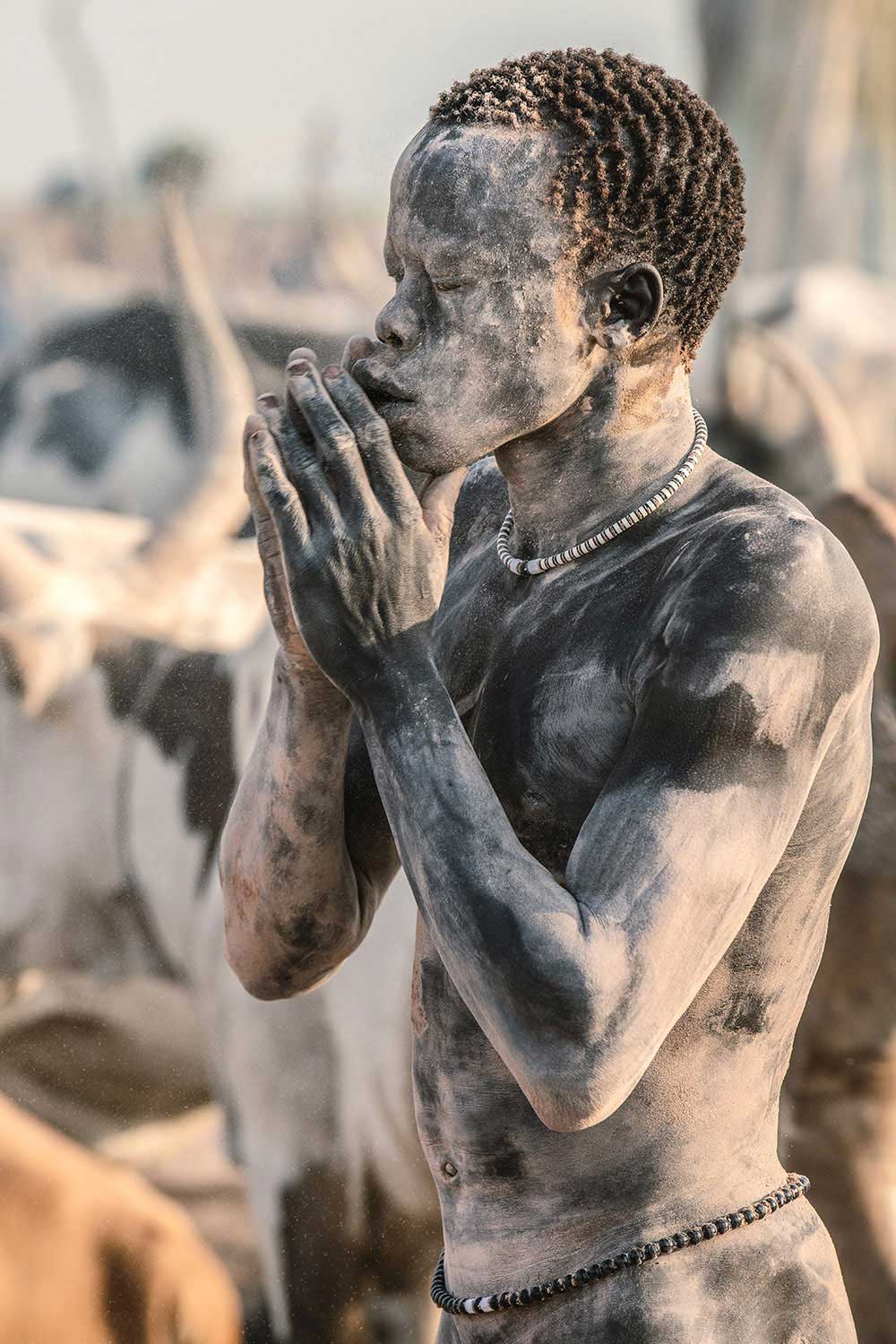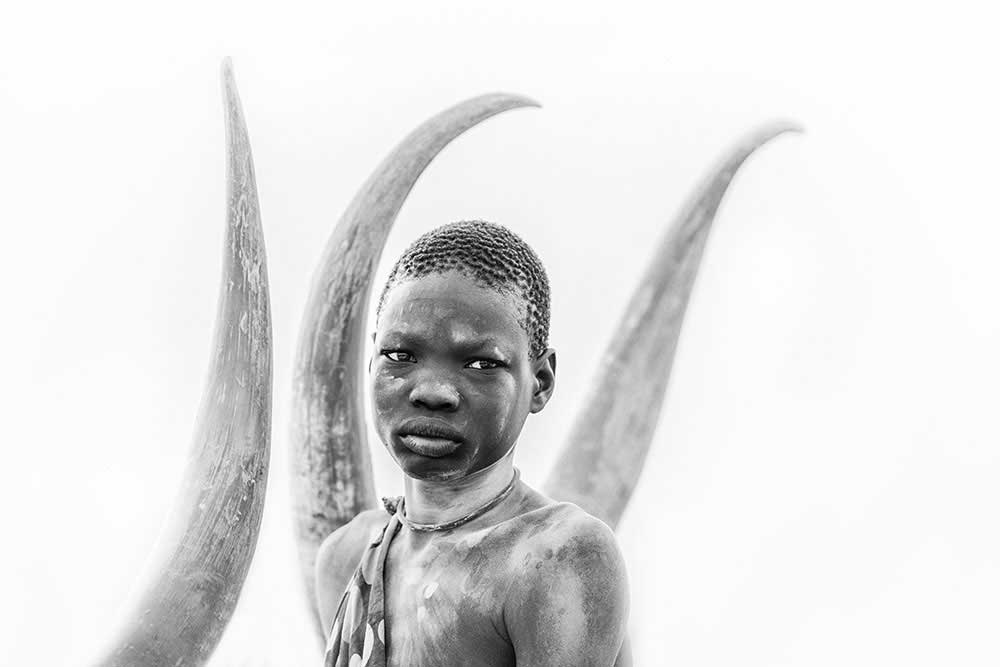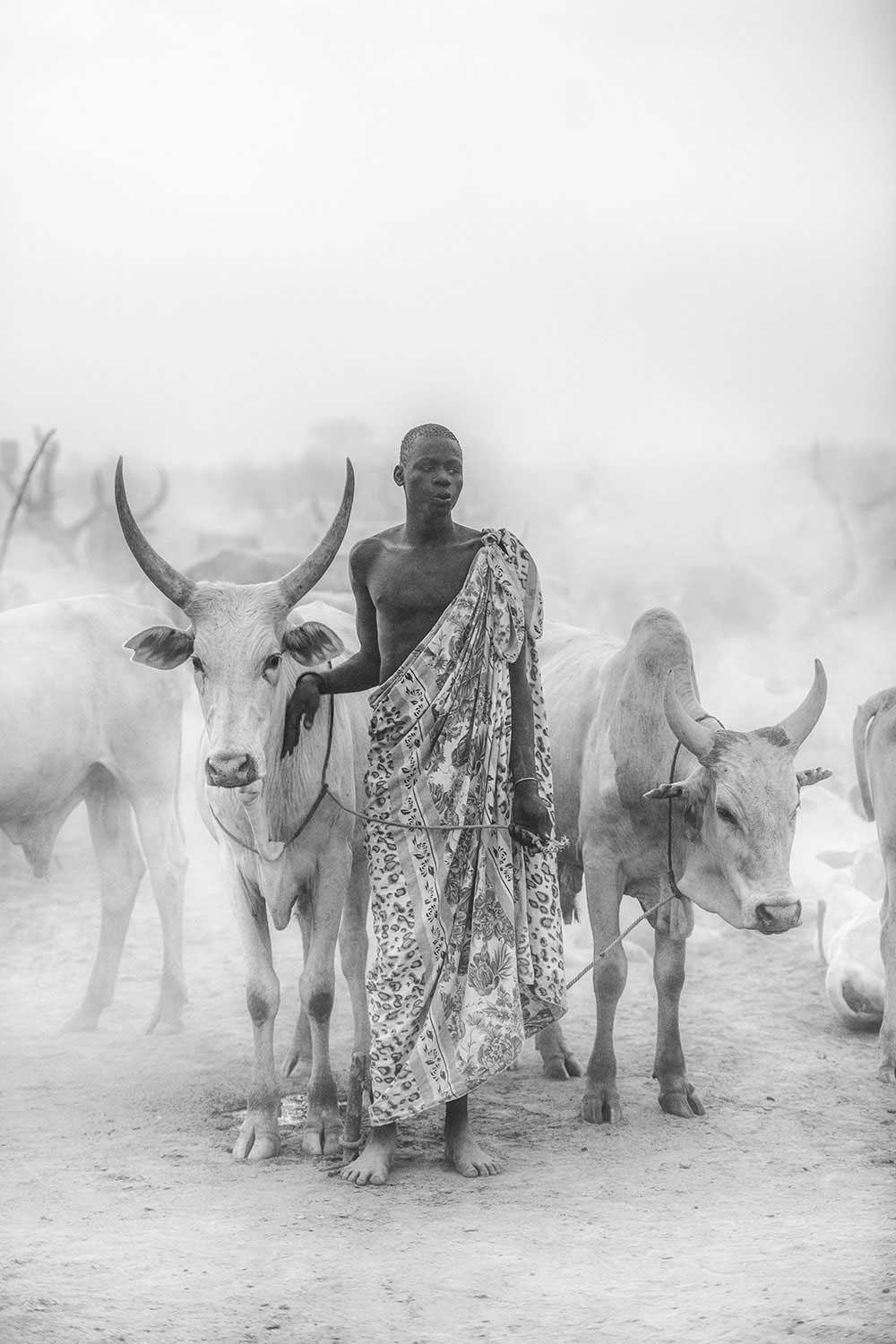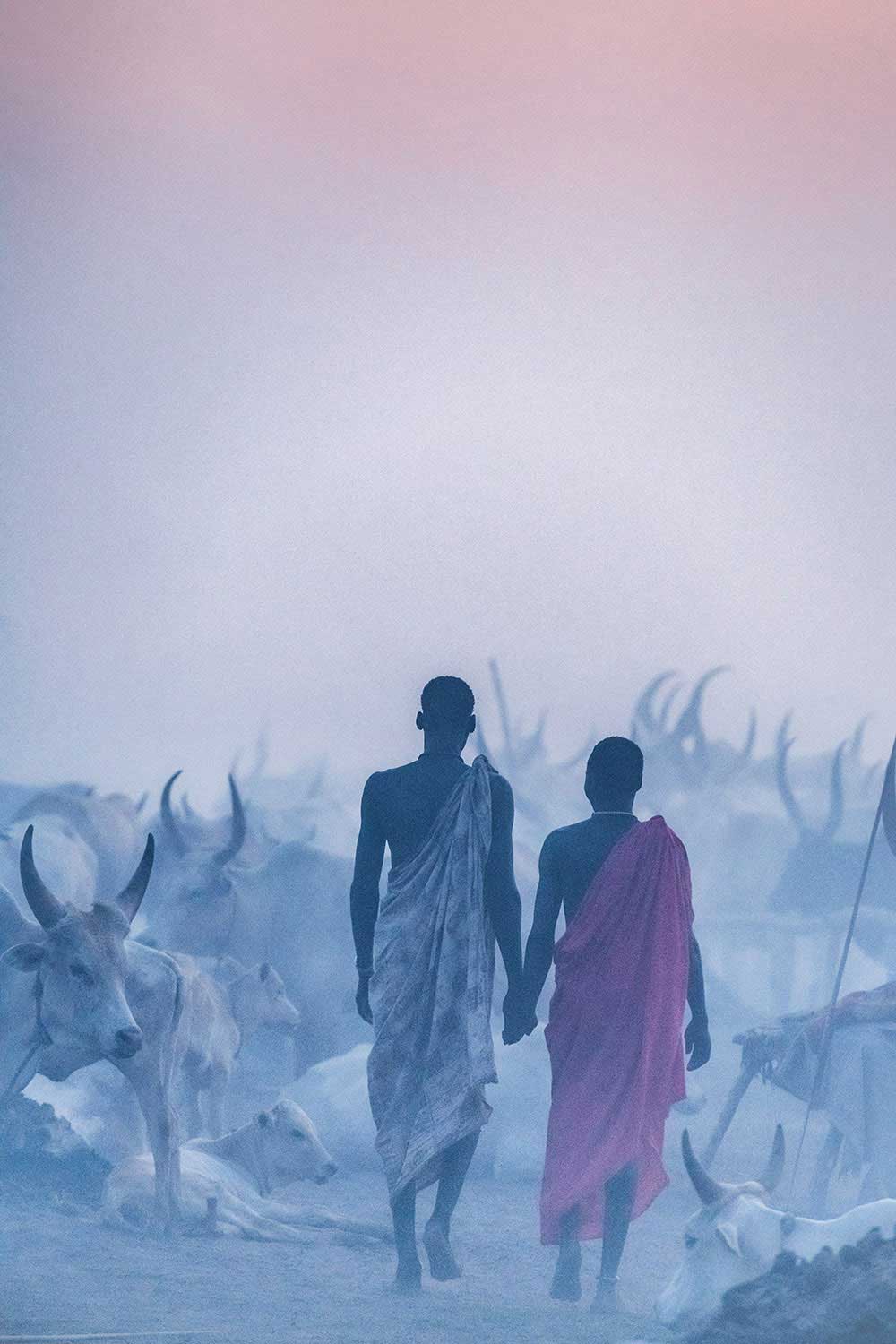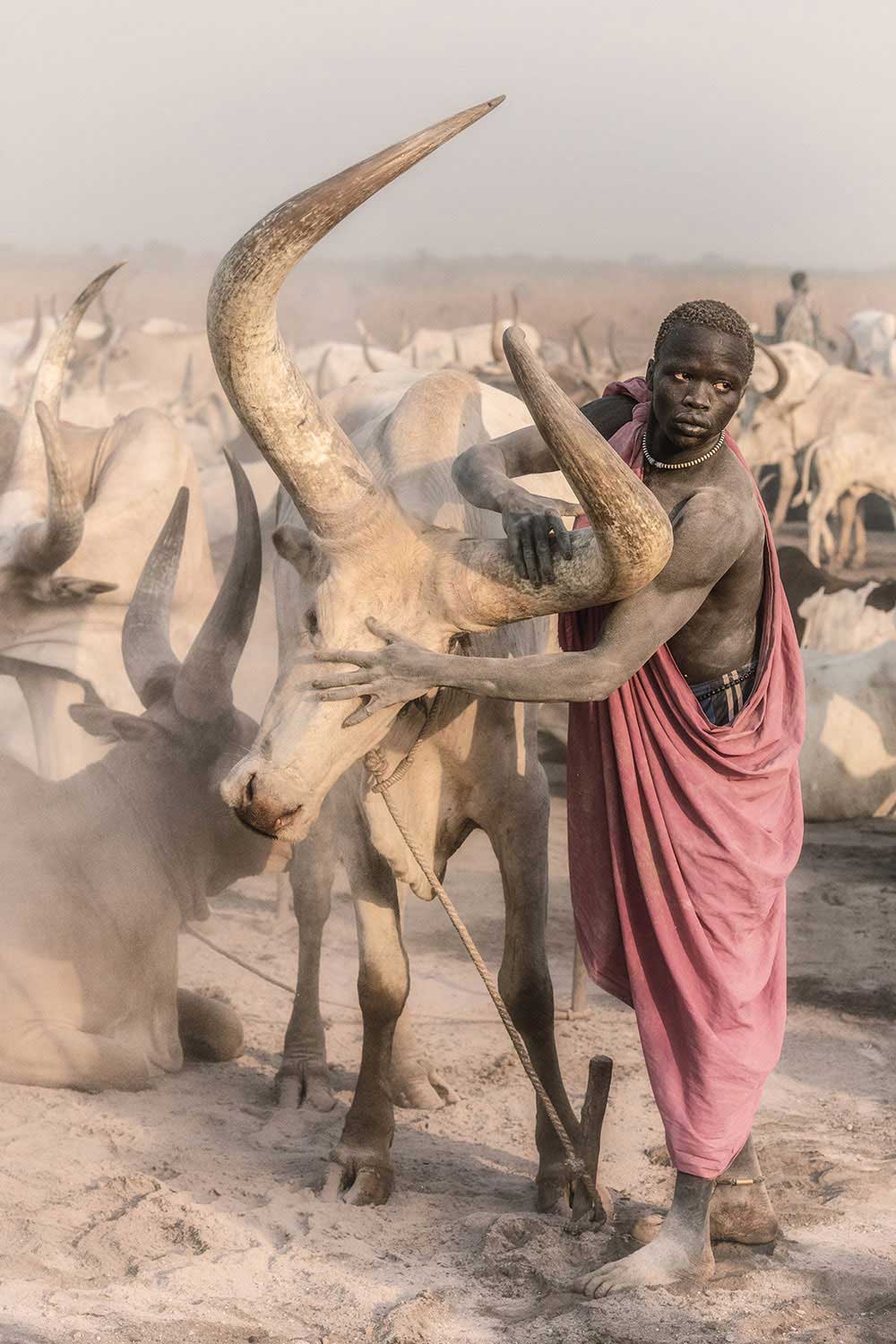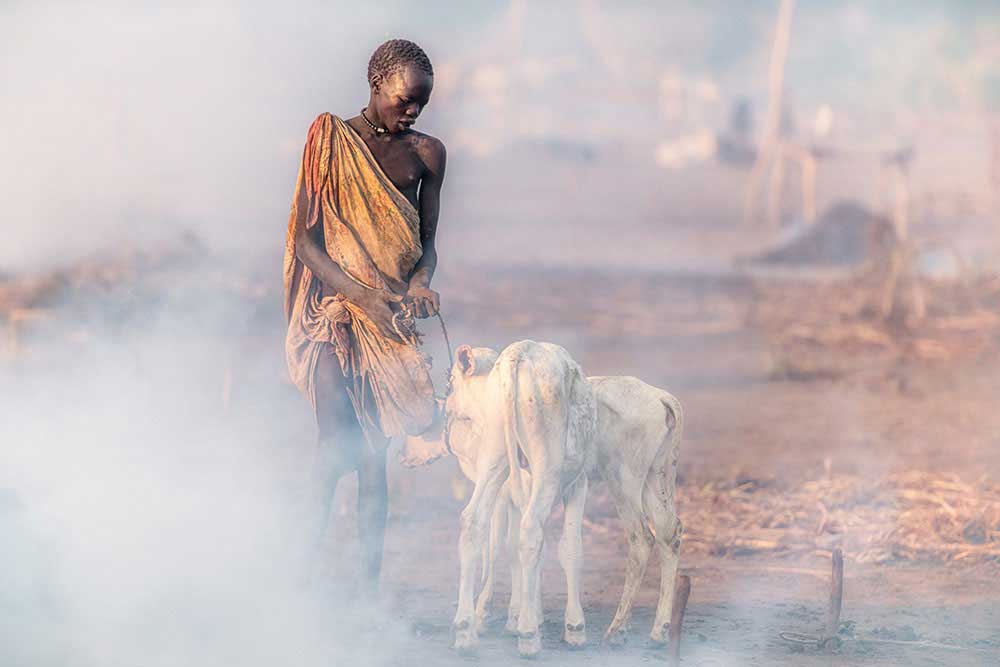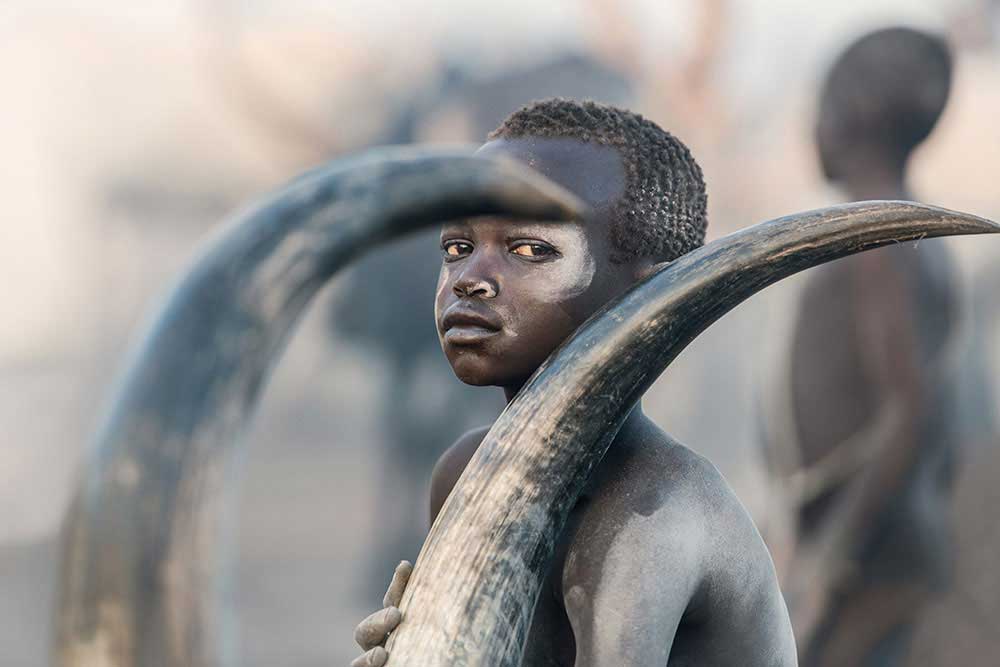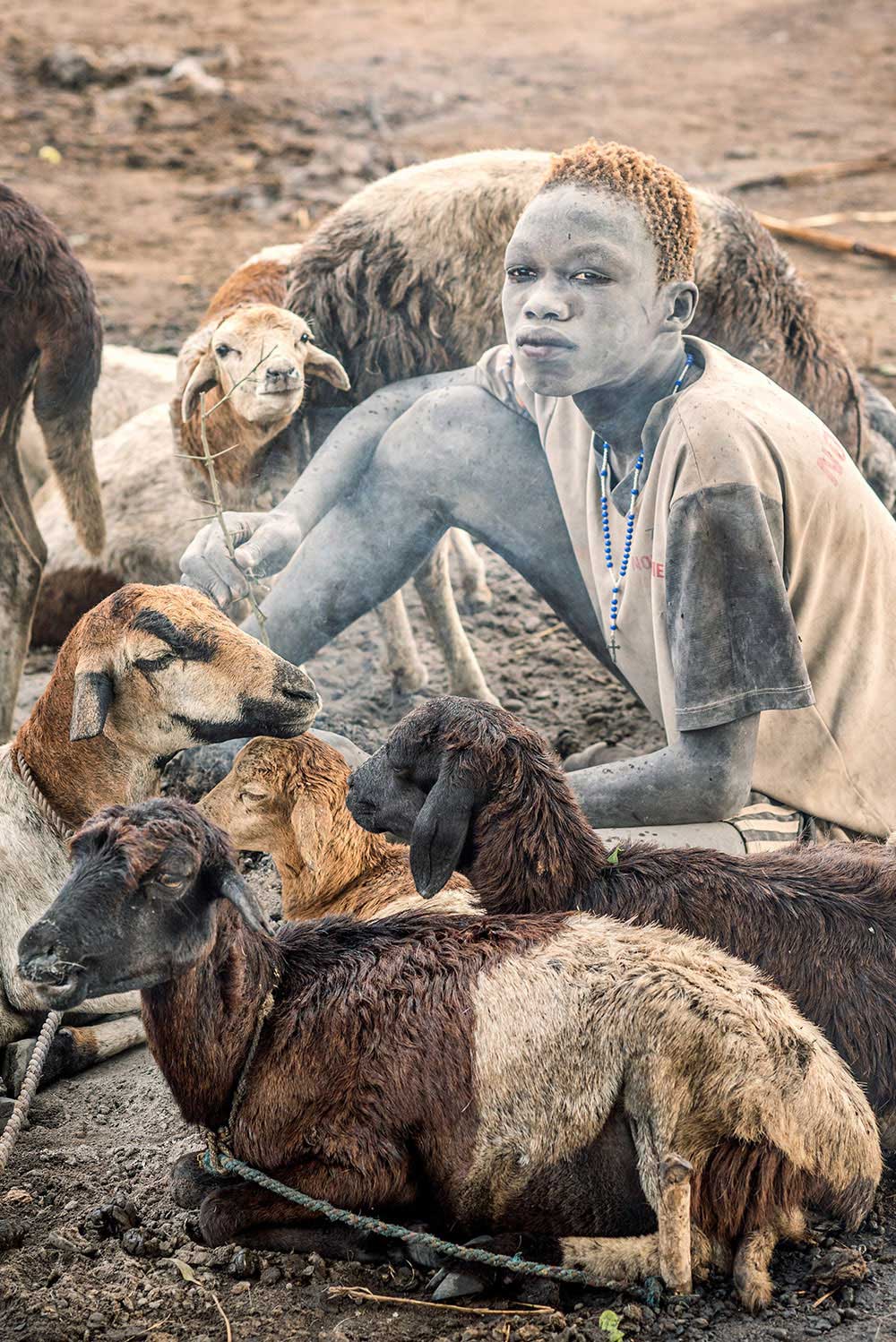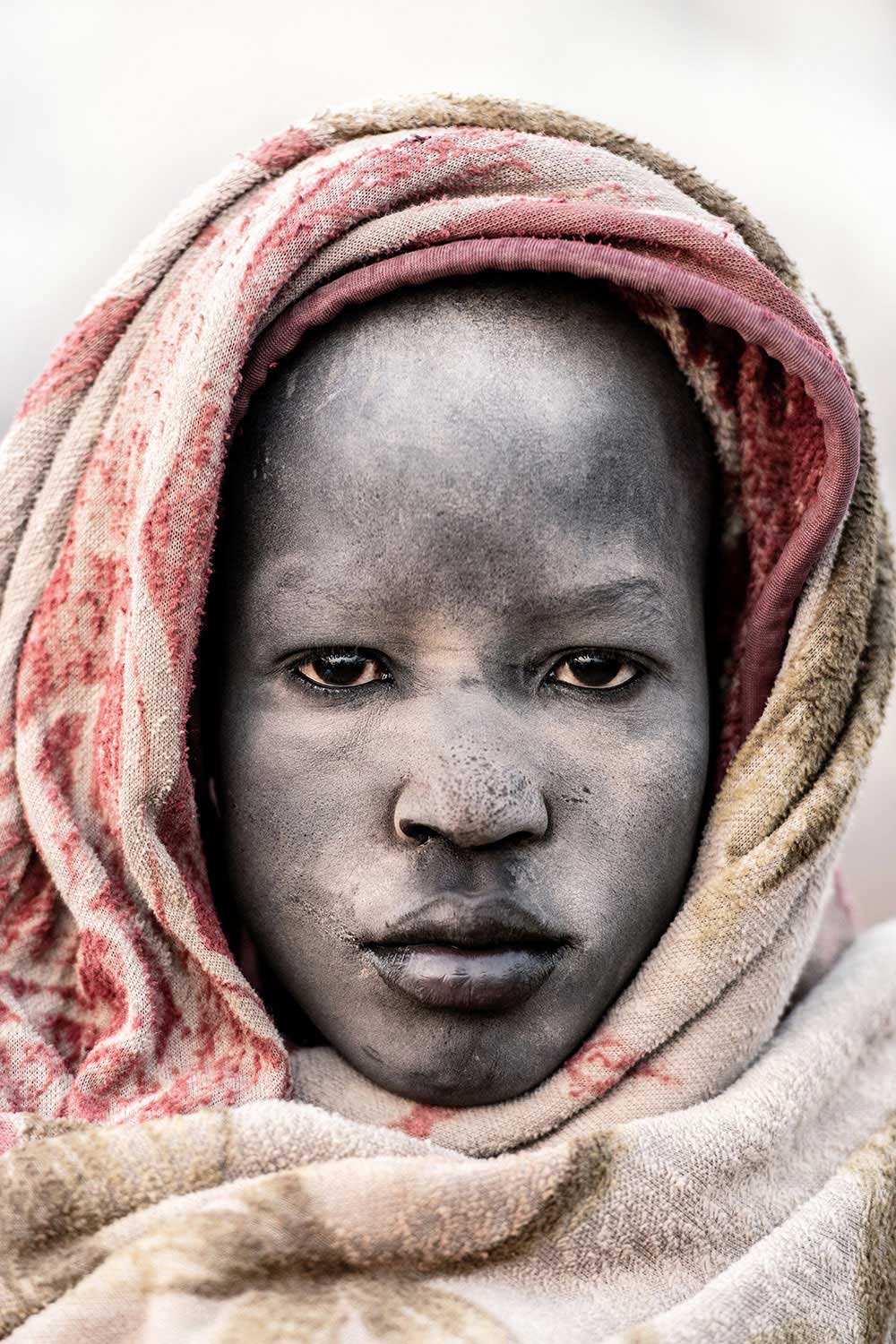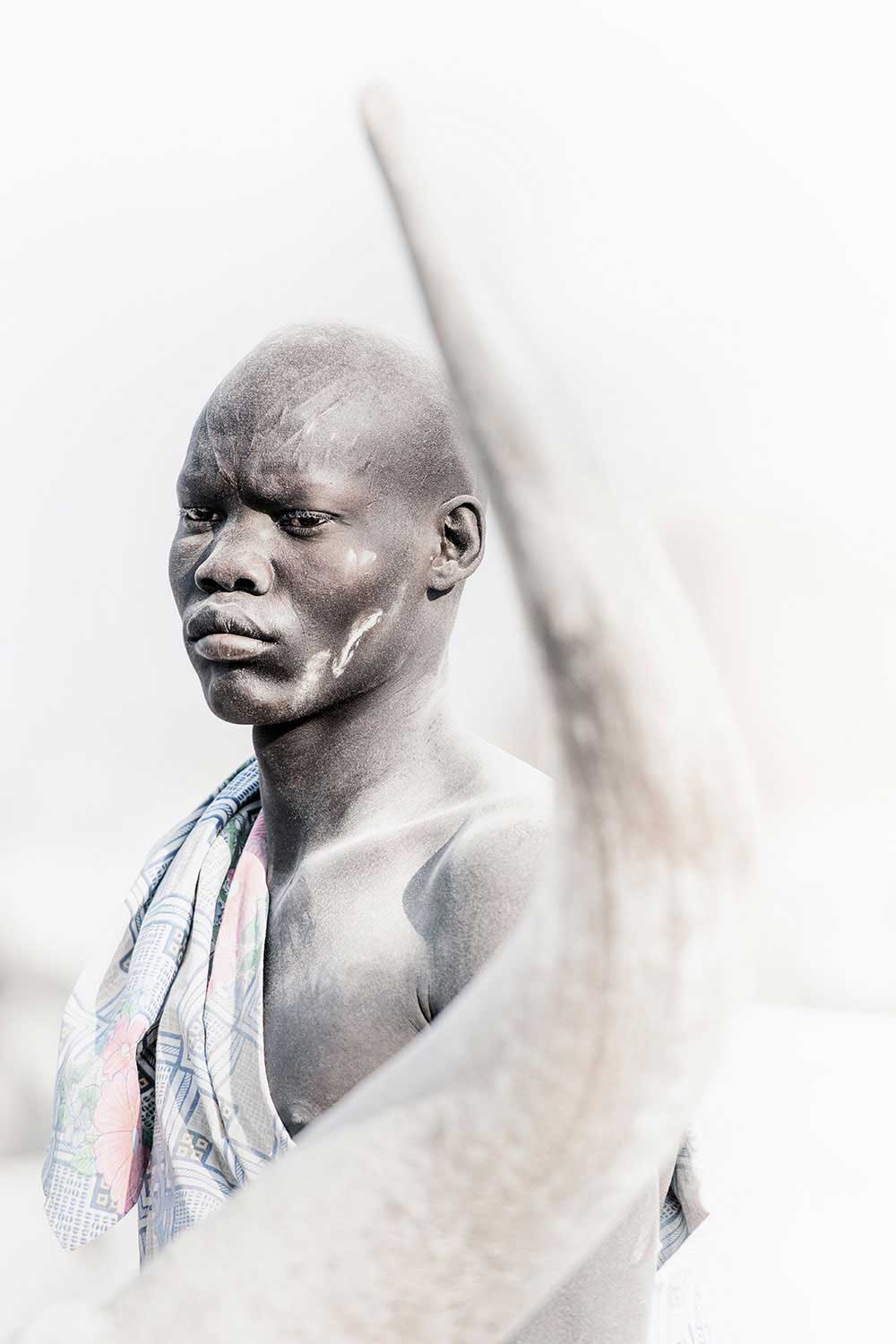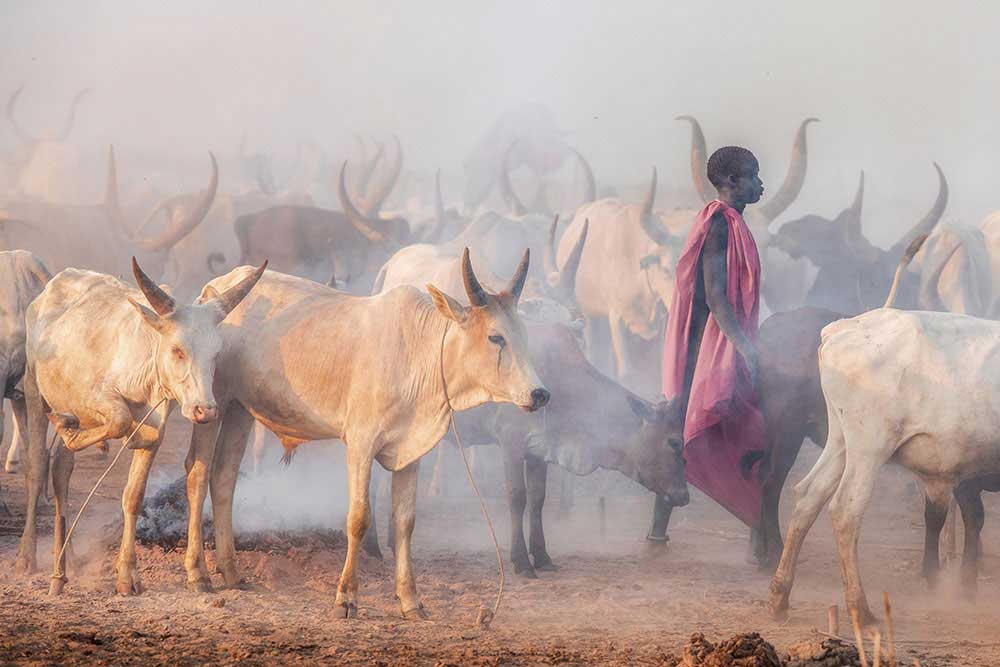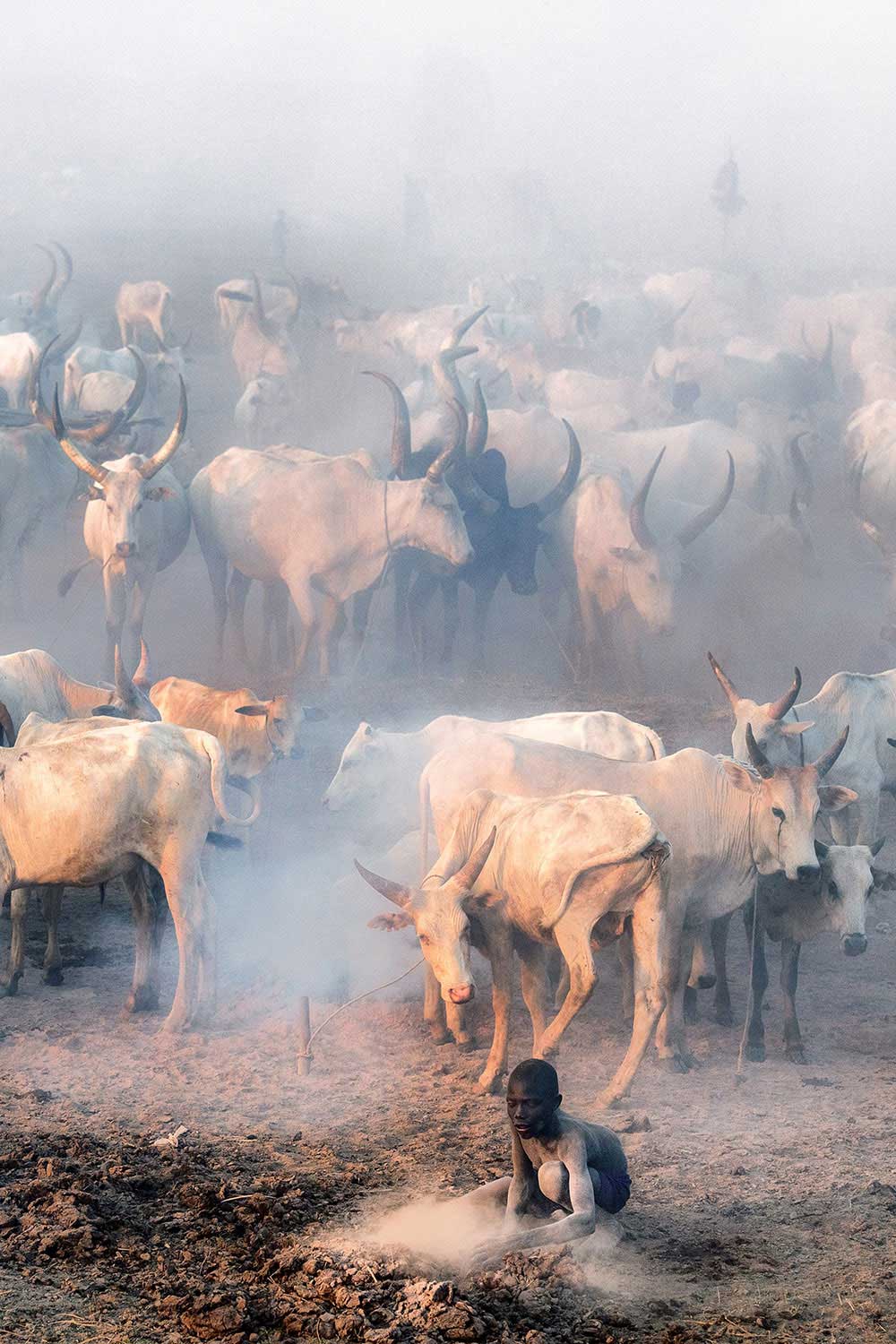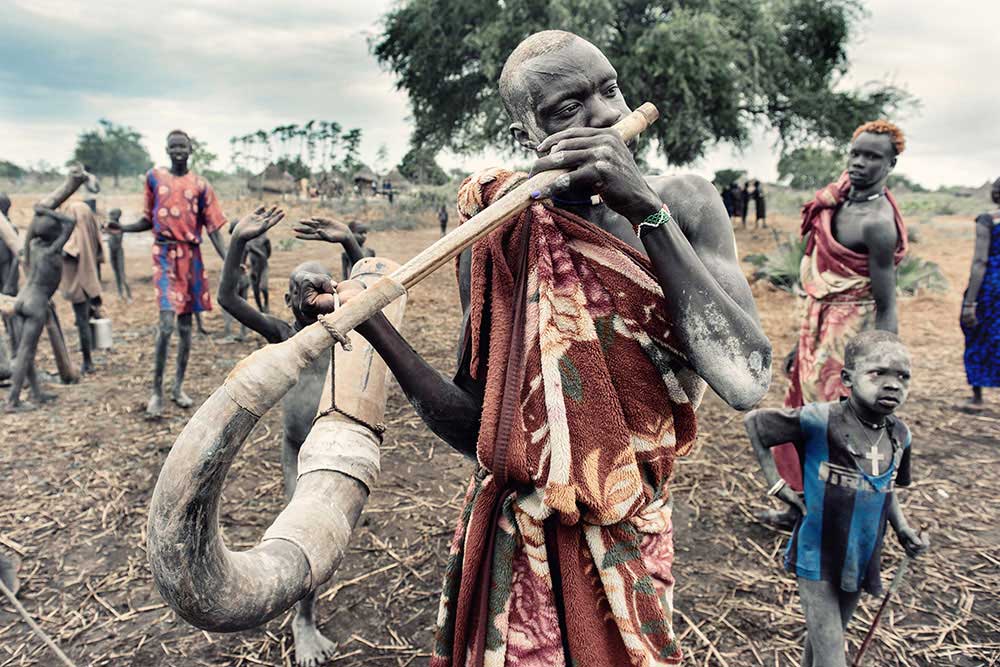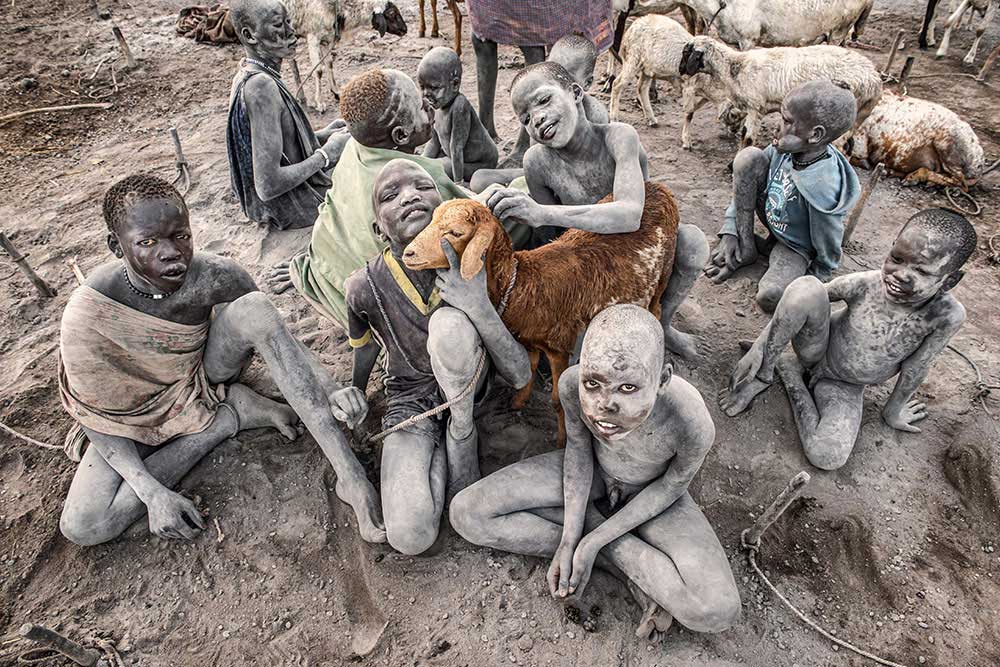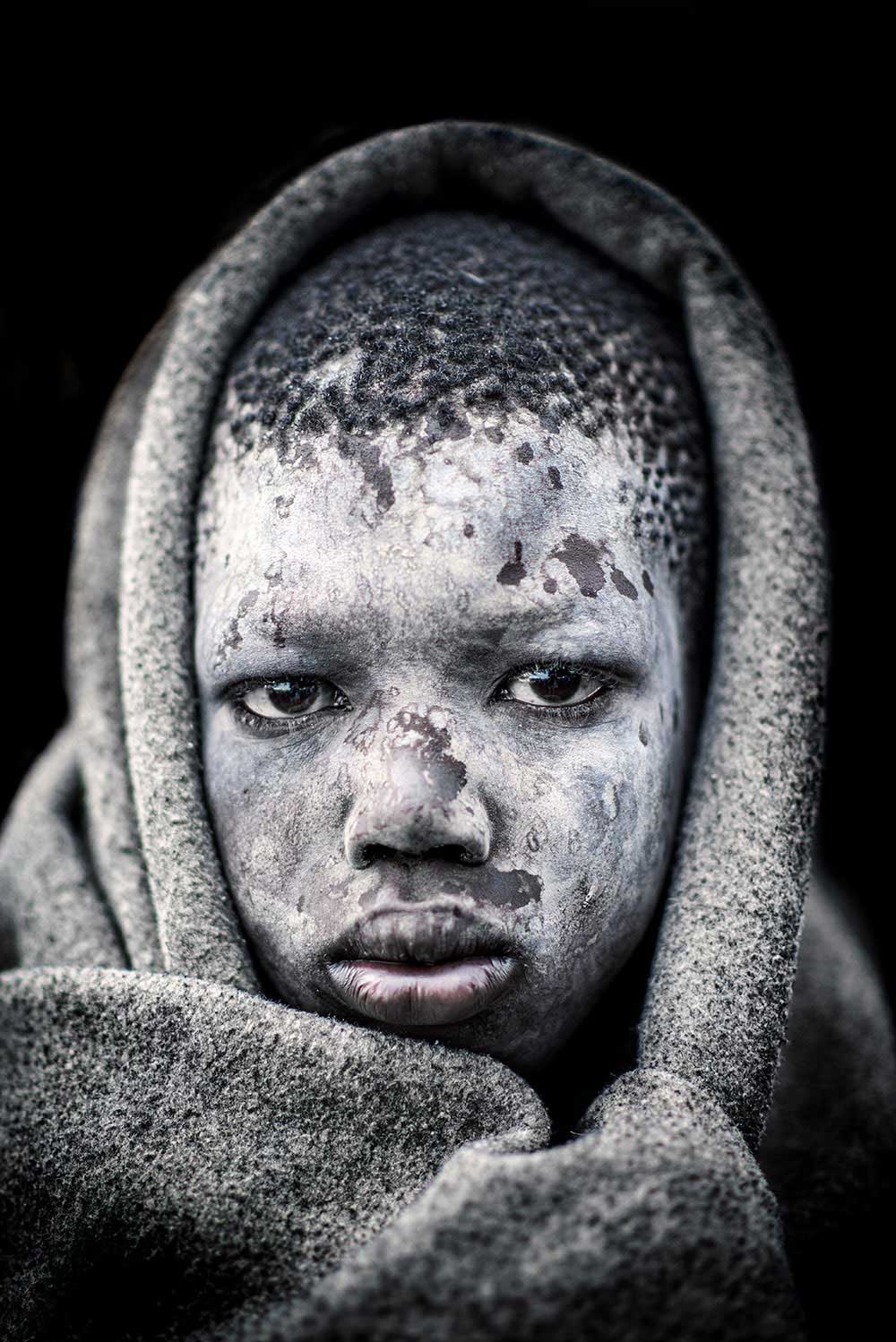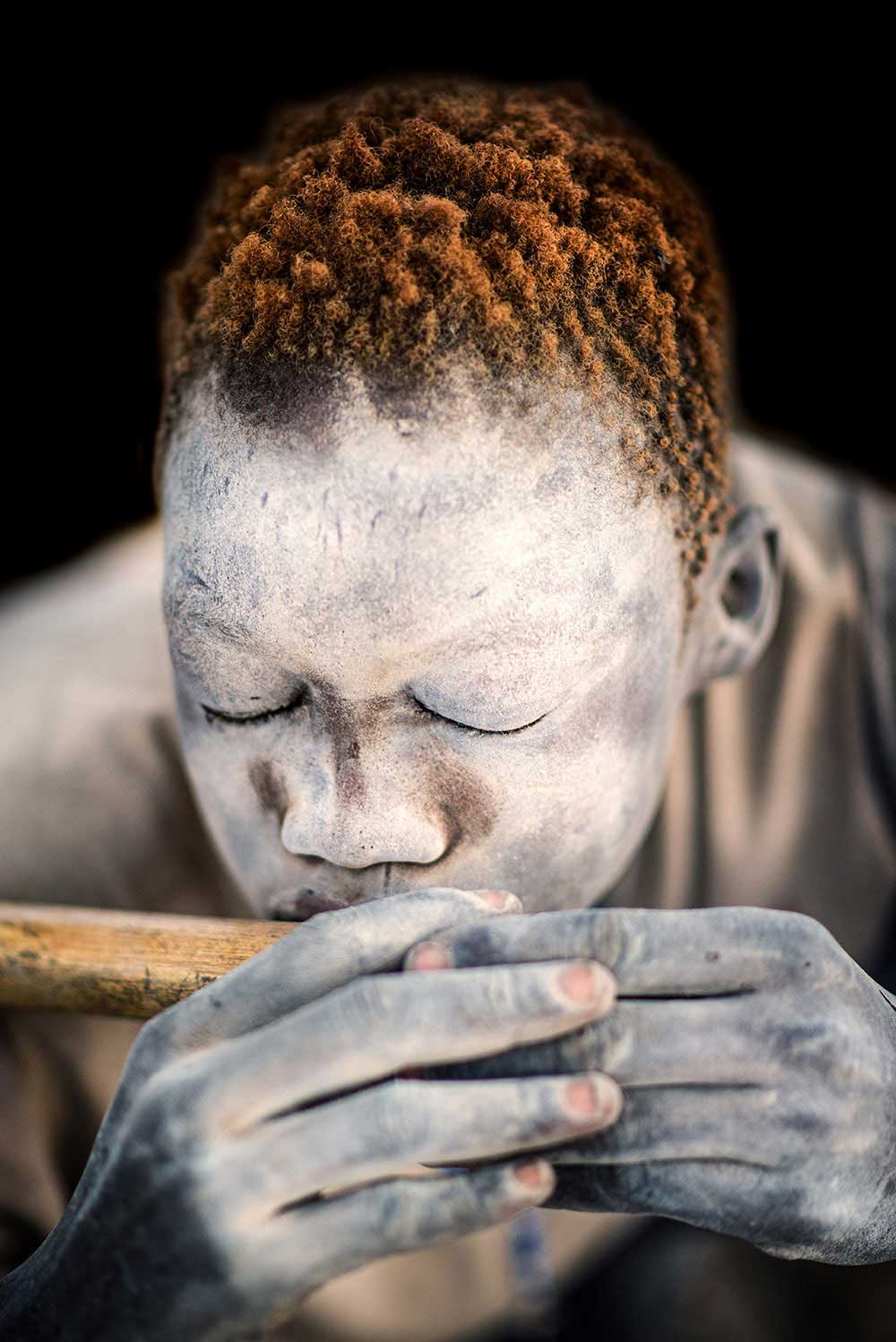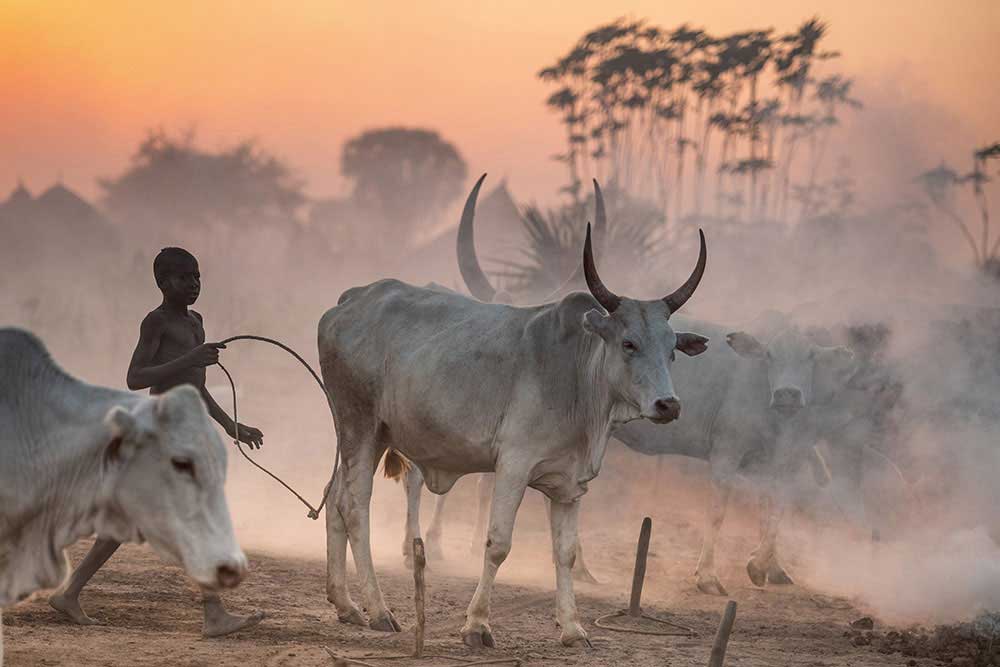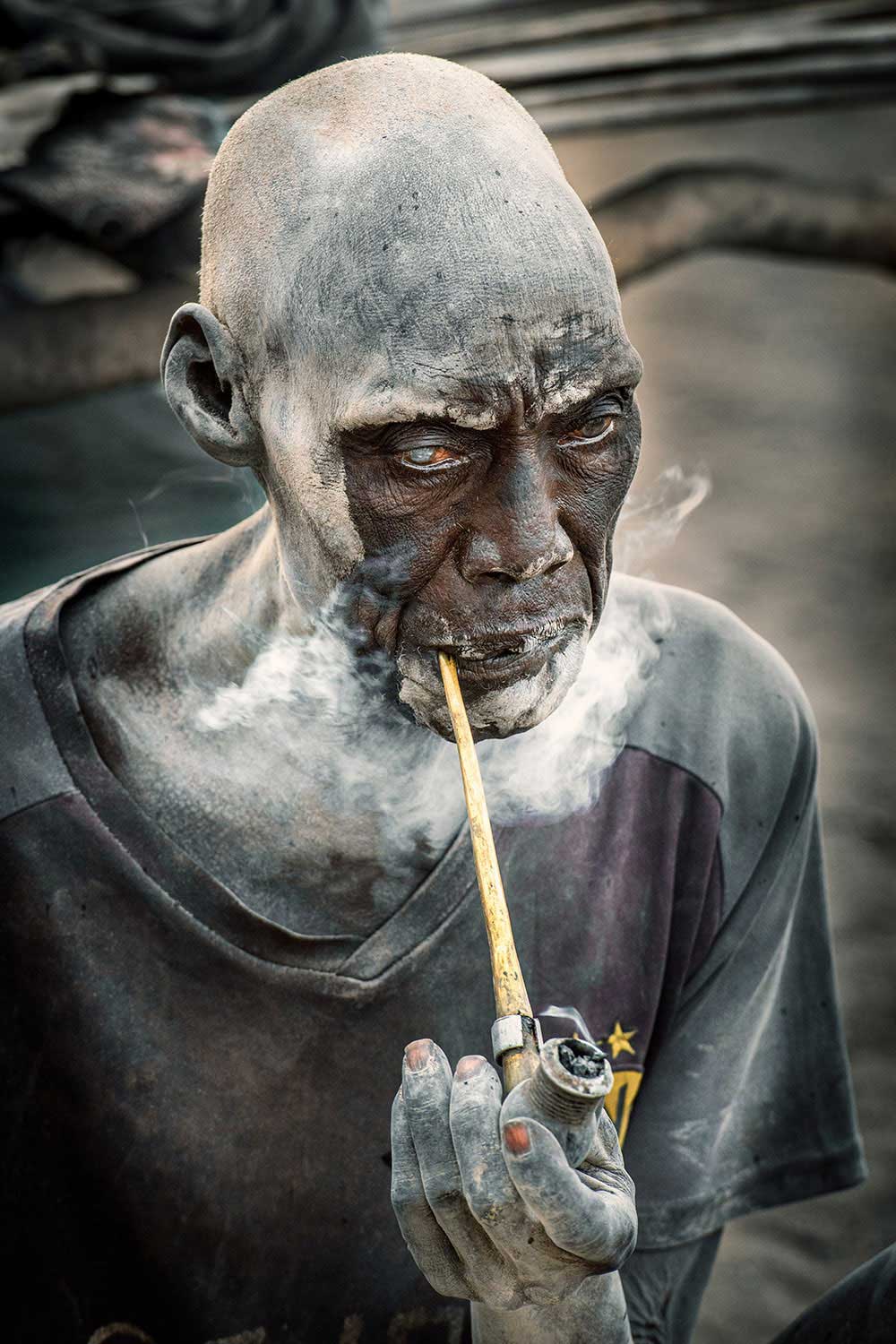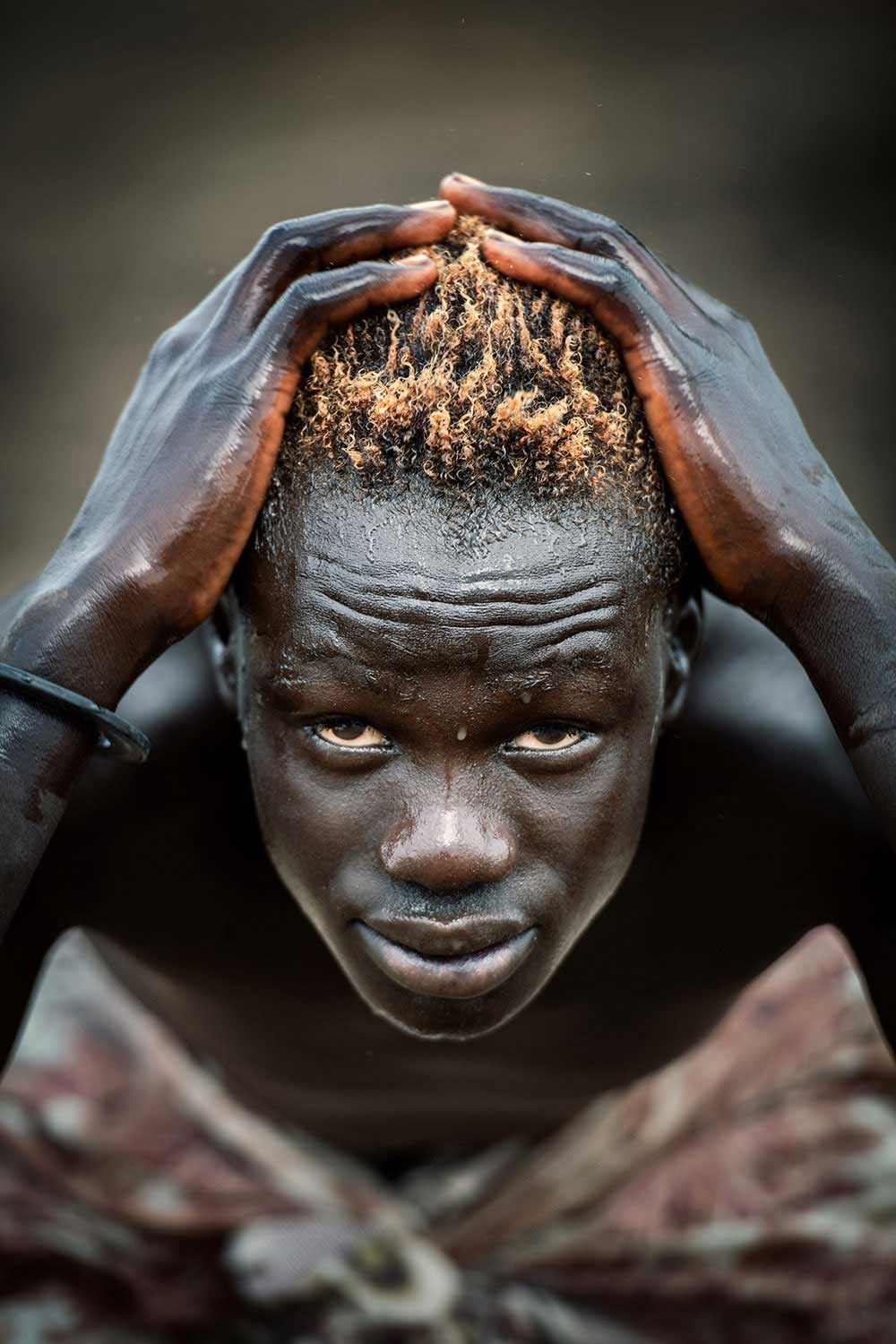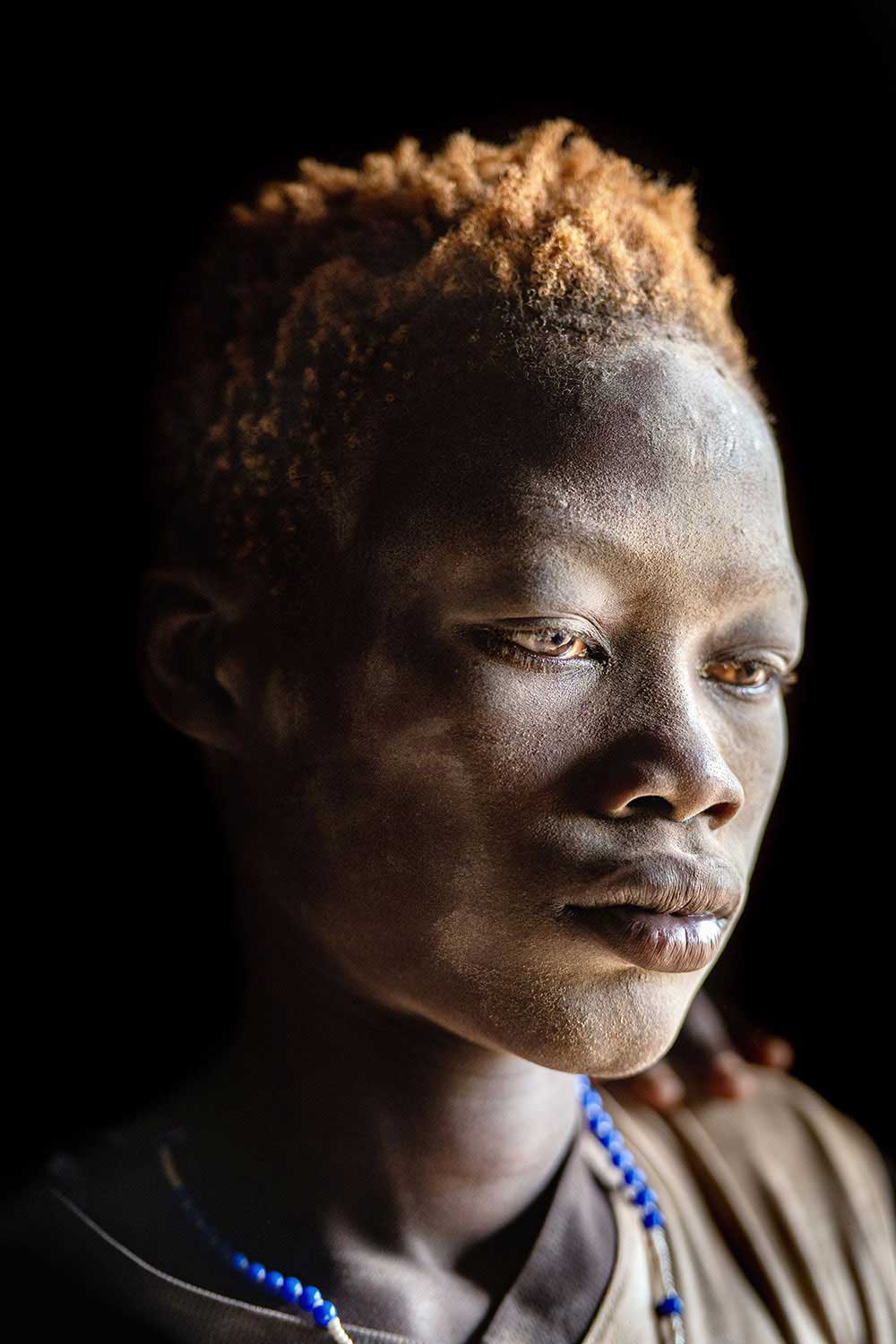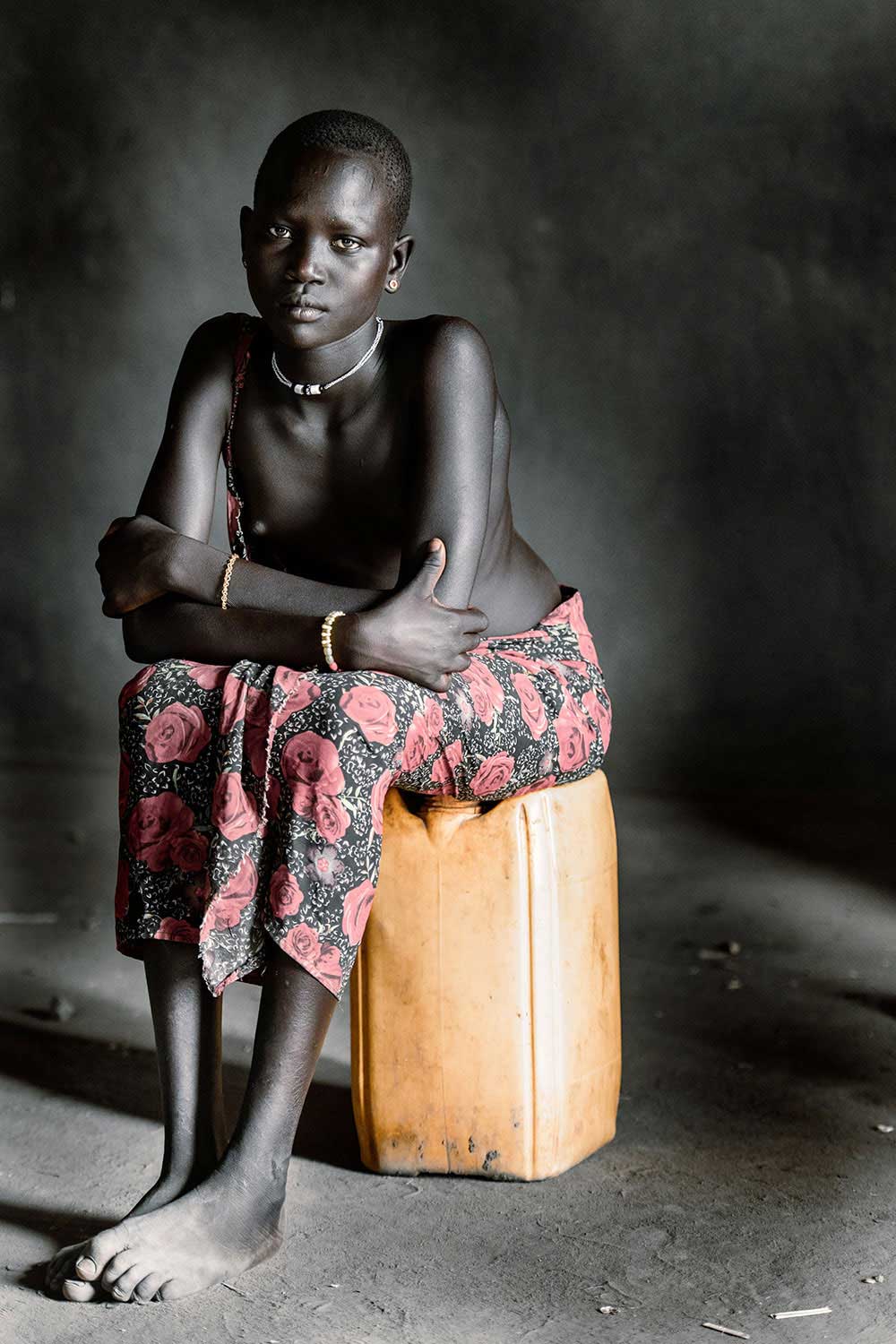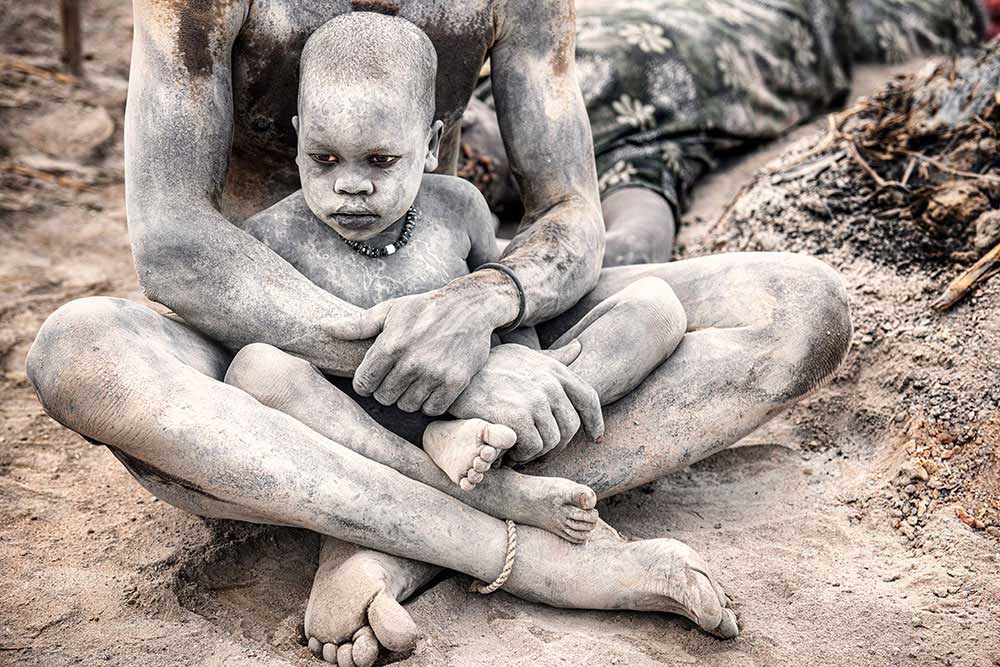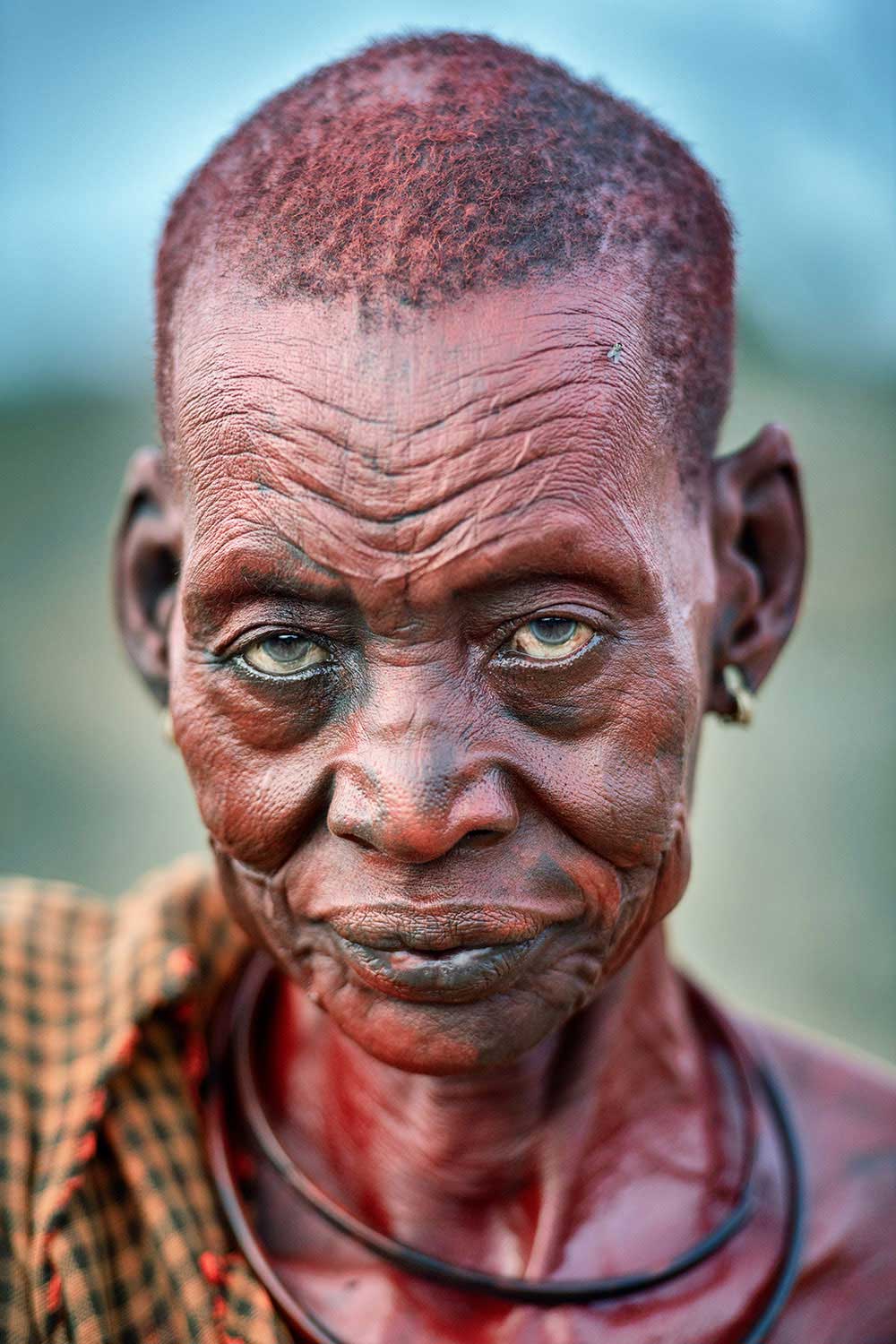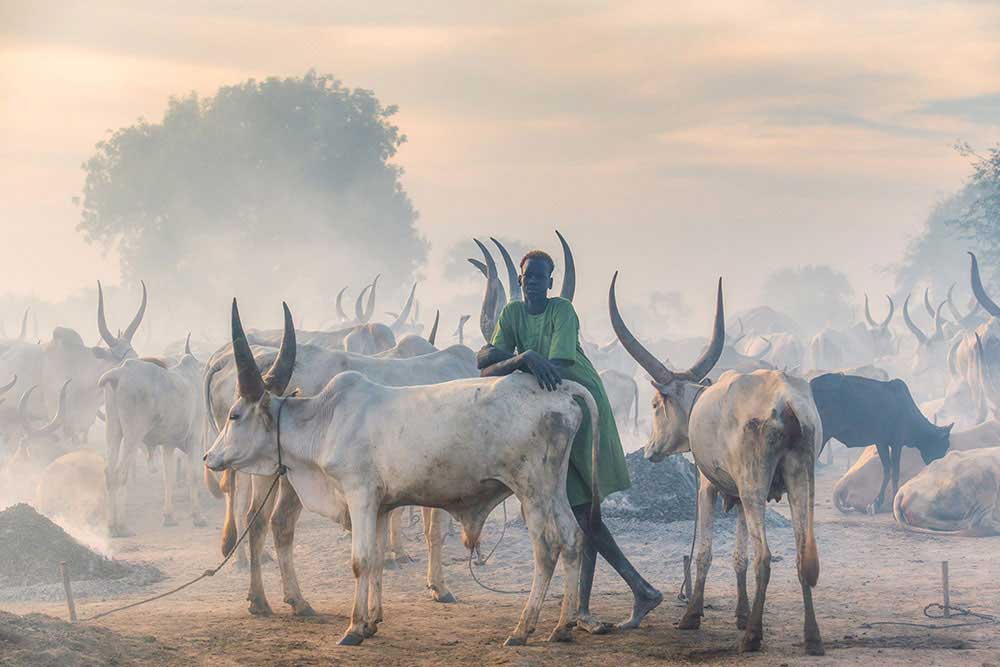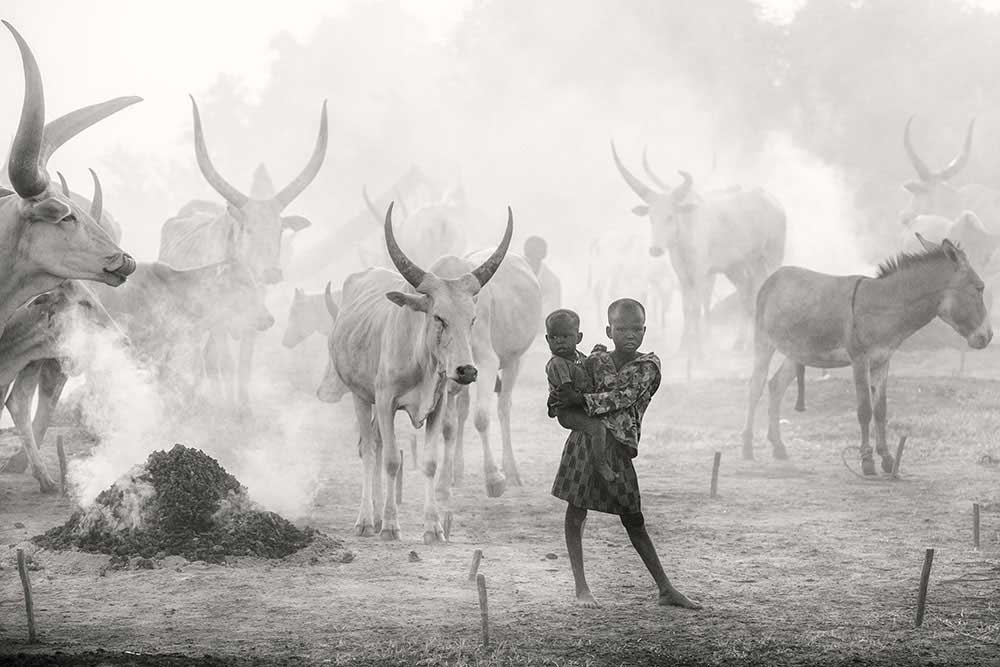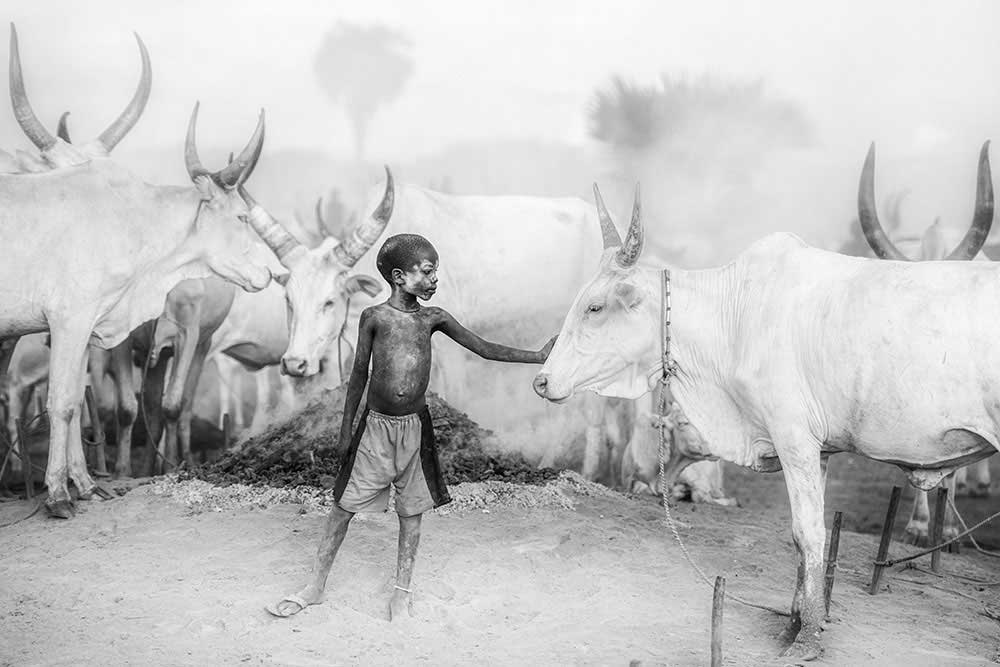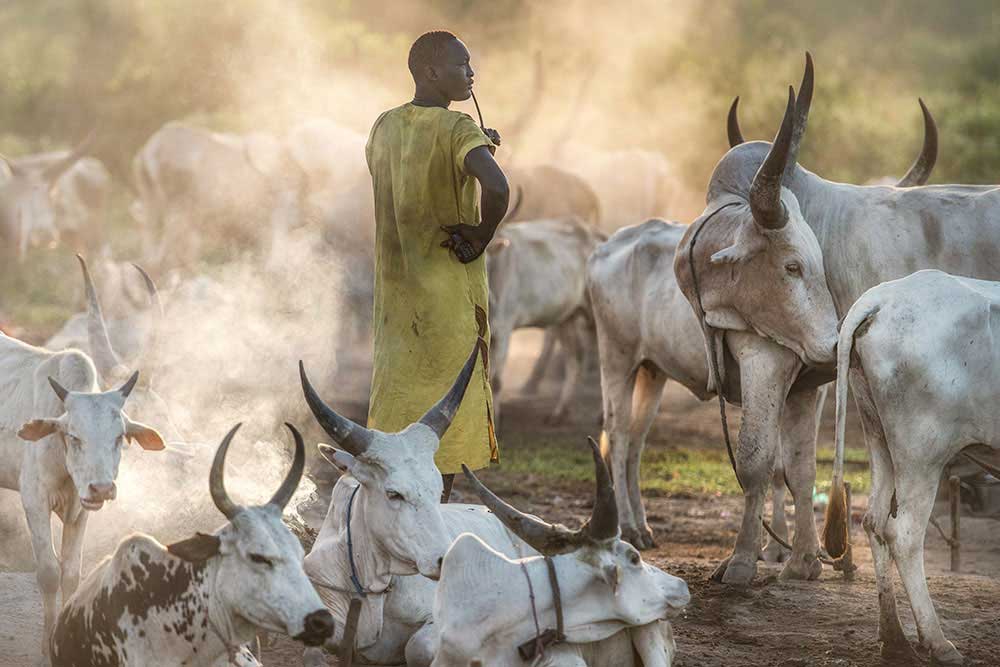The Mundari cattle camp, seldom visited by outsiders, is quite simply incredible. I saw Sebastiao Salgado’s photos of these camps years ago and there was little change that I could see.
The Mundari are friendly and enjoy being photographed. The dust and smoke intermingle to create and inimitable atmosphere. We arrived in the late afternoon when the light was soft and warm with long shadows. The tribe has all their wealth in their cattle and there are thousands of them. When the young men of the tribe get married the dowry may be as many as 40 cattle. They cover themselves in the ash from their fires to protect against insects.
At night they sleep with their cattle to protect them and they carry Kalashnikovs to do so. Cattle rustling is commonplace and is a cause of conflict. The Ankole Watusi cattle have the largest horns (perhaps a metre long in some cases) I have ever seen and the biggest of the cattle may be worth $500. During the day the cattle disperse from the banks of the Nile into the long grasses of the alluvial floodplain. They return at dusk instinctively.
Shooting at dawn and dusk is perfect as all the cattle are in place. The more you see, the more you realise that there is an inextricable bond between the tribe and their cattle. The way they lead them, rub ash into their skins, attend to their needs, use their milk, dung and urine. It is a symbiotic relationship where there is an understanding of the cattle which goes beyond normal animal husbandry. They take pride in their animals and the whole community of man and beast is interconnected. I have never seen anything like it.
Whilst they enjoyed having their photographs taken, they were always at work. We were a novelty to them and their reaction to us was welcoming. They collect the dung deposited overnight and spread it on the ground, some of it is used to coat the cattle horns with a veneer of manure. We watched as boys immersed their heads in the flow of fresh urine from the cattle. The outcome of this is to make use of a natural antiseptic and to change their hair colour to red or even bleached blonde! They relentlessly brushed around the huge camp ensuring that it was organised despite the huge numbers of cattle and smaller numbers of sheep and goats. The cattle are tied to a peg at night to ensure their security. They have their own parking places! There are forked sticks (small trunks) spaced around the camp which the night watchers/guards climb onto with their AK47’s or Kalashnikovs to watch over their wealth.
On the previous evening the air was filled with smoke from the dung and kindle wood fires to keep insects at bay. The dust is used to help dry the dung which is laboriously collected and piled in the mornings. It is then dried as fuel. They also cover themselves in ash for the same reason which gives them a ghostly appearance as they walk among their animals. As the sun sets in African style the light, smoke and dust create an ethereal atmosphere which makes it appear that the Mundari and their cattle fade into a mist. An ancient mist, trapped in time, where tribal traits and traditions are perpetuated in the twenty first century. These ancient practices ensure harmony with the environment and have a small ecological footprint, which is local and ensures cultural longevity. These people have a very sustainable existence and their connection with nature should be a message to us all. [Official Website]



